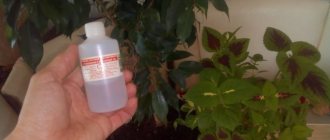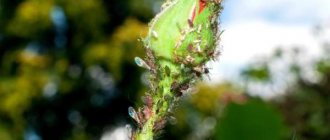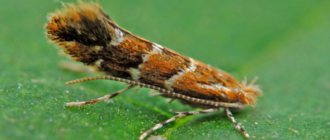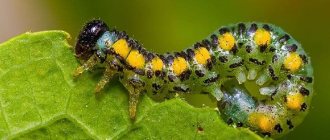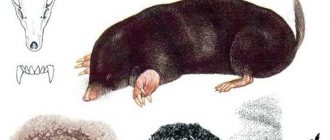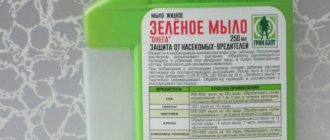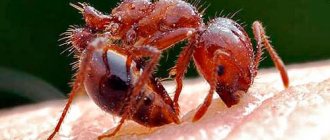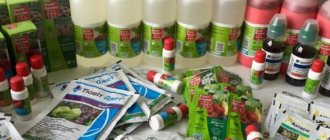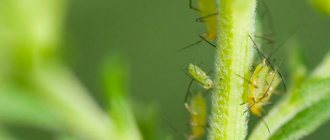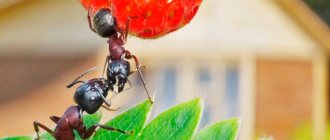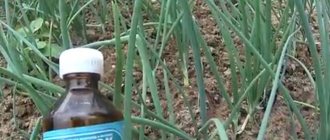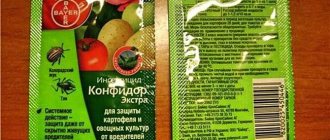What is copper sulfate, principle of action
This is a copper salt of sulfuric acid, crystals of a beautiful bright blue color. They have no taste or smell. They dissolve well in heated water and are hygroscopic.
Vitriol is used in gardening as a fungicidal agent and copper fertilizer. The effect of the drug is determined by the content of copper ions, in the first case - their destructive effect on fungi, in the second - the need of plants for this element. In both cases, the effect of copper strengthens the immunity of plants, they become more resistant to diseases.
The element takes part in the formation of enzymes responsible for the metabolism of carbohydrates and nitrogen, which ultimately has a positive effect on the quality of fruits: root vegetables acquire a sweeter taste, grains of cereals and oilseeds contain more fat, protein, sugars and acids, potatoes become starchy .
When and what is it used for?
The branches and trunks of shrubs and trees, and grapevines are treated with vitriol in the spring, while they are dormant, or in the fall, when the leaves have already fallen off. It is important that there are no leaves on the plants and that the buds remain unopened, because during spring and autumn treatments a concentrated solution is used, which leaves burns on the leaves.
The purpose of using copper sulfate is as follows: to disinfect the bark on branches and trunks from fungi, to destroy pests under it and to prevent infection or the emergence of pests and their reproduction.
During the season, sulfate is used to feed plants with copper. The deficiency of this element is observed especially strongly on peat and sandy soils, less so on fertile ones, for example, on chernozems.
Copper sulfate is also used as an antiseptic, which is used to treat wooden structures to prevent the development of mold on the walls of cellars, greenhouses and other household structures. The frequency of treatment is once every six months, the solution is applied with a brush or from a spray bottle. For better adhesion and enhanced fungicidal effect, the substance is mixed with lime.
Other Features
Follow all recommendations provided by the manufacturer (on the packaging). You should not prepare the solution “by eye”! This can lead to chemical burns to plants.
If it is necessary to disinfect the soil, use a 3% solution, spraying it over the entire surface. The procedure is repeated every few years - from 3 to 5. Then be sure to add humus and compost in the required volume.
Remember that it takes a few hours for the copper sulfate solution to take effect. In this case, it is highly desirable that the temperature be within +15…25℃. Precipitation can cause a decrease in the effectiveness of copper sulfate.
Copper sulfate is a very popular type of fertilizer. In agriculture, it is difficult to imagine an enterprise that does not use it. Moreover, if you follow all the standards for working with fertilizer declared by the manufacturers of the product, you can achieve high efficiency. Affordable price, relative safety and positive results when used make copper sulfate one of the best options for your business.
How to dilute copper sulfate
Depending on the purpose, the concentration of the drug will be different. General preparation rules: only a non-metallic container is suitable for stirring the solution; you can take a plastic, glass or ceramic one. Do not take cold water, it is best to warm it up to 50˚C. In cold conditions, dissolution takes longer, and the crystals quickly settle to the bottom. Dissolving and preparing the solution takes longer.
For feeding
Once a season you need to fertilize the soil with copper-containing fertilizers. Apply vitriol at the rate of 1 g per 1 sq. m. Since it is difficult to evenly scatter such a quantity of powder, you need to dissolve it in water and water the ground. For spraying, the dosage will be different - dilute 1-2 g per 10 liters.
See also
Instructions for use of the herbicide Frontier Optima, mechanism of action and application ratesRead
For treatment
To prepare a solution for treating tree branches and bushes, you need to dissolve 300 g in 10 liters, thereby obtaining a 3% solution. Vegetables in the garden cannot be sprayed with such a concentrated product; a 1.5% solution is prepared for them. The last spraying should be carried out 1-2 days before harvesting the fruits; be sure to rinse before use.
For burning
The proportions for dilution are 500 g per 10 l, that is, a 5% solution. It is used, for the most part, for disinfection and destruction of mold areas on the walls of buildings and structures. In the garden, a solution of this concentration is used to combat mosses on trees. It is necessary to process only carefully, only on dormant trees.
For whitewashing trunks
In the spring, it is customary to treat trunks and lower parts of branches with copper sulfate against fungi. It is simply dissolved in water, with a concentration of 3%, or mixed with lime in the same proportion. Trees are whitewashed once with the onset of warm weather. The purpose of the treatment is to destroy pathogens and pests that are under the bark. It is important to whitewash on time; if you are late, the pests will spread throughout the plant and begin to multiply.
From pests
Such treatments can be carried out in spring and autumn, but if pests appeared on the plant during the growing season, use a 1% solution (you need to dilute 100 g of powder in 10 liters of water). The maximum frequency of spraying is every 2 weeks.
Application in horticulture
Grapes sprayed with copper sulfate
The main function in gardening is the protection of vegetable and fruit crops from diseases and pests . It is also useful for ornamental plants. It is used to treat almost everything in the garden - trees, shrubs, vegetables, fruits, flowers. It fights fungal diseases and many pests, including scab, all types of spotting and rot.
It also acts as an excellent antiseptic in the garden ; if you need to disinfect something, it’s better not to find it. It is also widely used as a microfertilizer to enrich the soil with copper. Since the substance is a fungicide, when treating plants it acts only on the surface, without penetrating inside, which makes it safe for the garden. When washed off with water, the effect on the plant completely stops. It is used in the garden for three seasons.
Spring
Spraying is carried out in calm weather
After the end of winter frosts, the garden cannot do without copper sulfate. In the spring, it is necessary to spray the trunks and crowns of all trees and shrubs in the garden with this solution to destroy all fungal infections that have successfully overwintered and will begin their active activity in the spring.
The following proven dosages of the solution are recommended:
- For pome crops – 1% solution.
- Stone fruits – 0.5% solution.
- For shrubs – 1.5% solution.
Treatment is carried out until the buds on trees and shrubs swell. The procedure should be carried out only in good weather, when there is no wind or precipitation.
Summer
After the garden has undergone spring treatment, treatment begins in the summer.
- The roots of seedlings are treated to treat them against fungal diseases . To do this, soak the roots of the seedlings in a 1% solution for no more than 3 minutes, after which be sure to rinse them well with water.
- Sulfuric acid comes out the main component in the production of Bordeaux mixture for the garden and vegetable garden, which is simply irreplaceable for any gardener. Almost all plants in the garden are treated with this mixture to protect them from pests and diseases.
To prepare the Bordeaux mixture you need 250 grams of lime (slaked), mixed with 250 grams of sulfuric acid, vitriol, dissolved in 25 liters of water.This mixture can also be used as a prophylaxis once every 2 months.
Autumn
Autumn treatment of the garden with sulfate in the fall is very important, since the garden must be protected during the winter period, during which pathogens actively appear.
In the fall, it is necessary to treat all trees and shrubs with a 1% solution, and also enrich the soil with copper.
Instructions for use
The spray liquid should be prepared before use and used quickly; it is not stored for a long time. Stir until completely dissolved and shake from time to time while working to maintain homogeneity. When diluting, it is important to accurately dose the powder; if you exceed the norm, the solution will be toxic to plants, especially if applied to green leaves.
Spraying should be carried out in dry weather, on a windless day. The solution works best in warm weather. If rain is expected, it is best to postpone treatment. If the solution is washed off, it cannot be reapplied immediately. When there is an excess of copper, it accumulates in the plant, fruits, and when it gets on the soil, it also accumulates in it. An excess is just as harmful to the life of plants as a deficiency. The effect of the substance begins after 2-4 hours and lasts for a week and a half.
Expert opinion
Zarechny Maxim Valerievich
Agronomist with 12 years of experience. Our best country expert.
Ask a Question
As a fertilizer, vitriol is used more often for quick feeding with copper. It is applied by watering or spraying. A single application to plants is usually enough for everything to return to normal.
Precautionary measures
Means of protection
Copper sulfate is truly an incredibly useful substance. However, it must be used wisely so as not to harm plants, the earth and even people who are in close proximity during its use.
- Treatment of plants is usually carried out early in the morning or in the evening, after sunset, otherwise burns will appear on the leaves.
- Solutions can only be used in calm weather.
- There is no benefit from spraying after rain or immediately before it.
- You should always adhere to the correct concentration of copper sulfate! Solutions with a concentration of more than 5% kill any pests, but the plants themselves will be burned - do not forget about this.
- Immediately after using the product, you must wash your garden tools.
- Copper sulfate can only be used in overalls, gloves, and a mask, so as not to inhale the vapors and prevent the substance from getting on the skin or eyes.
- Spraying is permissible before buds open and after leaf fall. Under no circumstances should copper sulfate be sprayed during flowering crops - this will lead to poisoning of any pollinators, including bees.
- Treatment with copper sulfate is carried out no later than a month before harvest!
Do not forget that copper sulfate is poisonous to humans. The lethal dose is only 50 ml. Moreover, it can be absorbed through sweat and absorbed when it comes into contact with any mucous membranes. Therefore, when working with CuSO4, you must take personal protective measures and handle the solution carefully.
Security measures
In terms of toxicity level, copper sulfate belongs to class 3 drugs. It contains agents with moderate toxicity. If you use the drug according to the instructions, poisoning rarely occurs. However, upon contact with skin and mucous membranes, vitriol often causes irritation; To reduce the likelihood of this, you should only work with it while wearing rubber gloves. Protect your eyes with glasses and wear a respirator. Do not drink, smoke or eat during treatment.
See also
Instructions for use of the herbicide Pyramine Turbo, how to prepare a working solutionRead
Any solution that gets on the skin must be washed off with warm water. If signs of illness appear that may indicate poisoning, carry out independent treatment: drink activated charcoal, drink at least 1 liter of water. Wait 15 minutes. and induce vomiting. If there is no improvement, consult a doctor.
Compatibility with other substances
The drug should not be diluted in common mixtures with drugs from the FOS group and agents that can decompose when interacting with alkaline substances. Despite its generally good compatibility, copper sulfate is not recommended to be mixed with any other pesticides. It is advisable to maintain an interval between treatments of at least 1-2 weeks.
Spring spraying
Spring treatment of trees in the garden is extremely useful, as flowering plants require more copper. Many gardeners argue that spring treatment is more important than autumn treatment, especially if it alternates with spraying with iron sulfate.
It is important to use a freshly prepared solution, since during long-term storage the dissolved copper sulfate crystallizes again, precipitating.
In addition to fruit trees, in the spring you can spray the soil on which you plan to plant vegetables. This must be done in advance, at a stable above-zero air temperature.
Also in the spring, just before planting, you can spray seed potatoes. The concentration of vitriol should not exceed 0.2%. It won’t hurt to spray the roots of tomato seedlings with this solution before planting.
Many gardeners, before germinating seeds for seedlings, soak them in a CuSO4 solution. In their opinion, this will protect future plants from diseases. Breeders do not advise doing this, since copper will not have time to be completely released from the seeds into the soil.
Storage rules
The shelf life of copper sulfate, as indicated by manufacturers, is 3 years. But many gardeners have found in practice that if storage conditions are met, this substance can be stored without loss of properties much longer.
Expert opinion
Zarechny Maxim Valerievich
Agronomist with 12 years of experience. Our best country expert.
Ask a Question
The main storage condition is a dry room. Powder that is exposed to air constantly absorbs moisture. The substance cakes and hardens. This does not affect its properties, but lumps dissolve worse.
It is recommended to use the prepared solution on the same day, but it can also be stored for no more than 3 months. That is, if there is something left after processing, there is no need to pour out the solution; you can pour it into a plastic canister and store it under a closed lid.
Storage temperature range is from minus 30 to plus 30 ˚С. The powder is not afraid of freezing, so it is not necessary to keep it in a warm room. Copper sulfate should be placed separately from food, feed and household products. Store in a place where it is inaccessible to children and animals.
Analogs
Copper sulfate in agriculture and private farming is replaced with preparations containing copper. For example, you can use the means “Speed”, “Chorus”, “Hom”, “Strobe”. These are effective fungicides that are used in the same way as vitriol - to treat fungi and to prevent their occurrence. Fungicides are used to treat trees and bushes in autumn and spring, but they can also be used on vegetables and berries throughout the season. As a fungicide, copper sulfate can be replaced with iron sulfate; this substance has a similar effect on fungi.
As a fertilizer, the substance is replaced with complex ready-made fertilizers with a high copper content. If you only need to add this element, especially if there is a pronounced deficiency, it is best to use copper chelate, in which it is presented in the form most assimilated by plants.
Copper sulfate is actively used as an antiseptic and antifungal agent, which always gives the expected result. We can say that this drug is indispensable for treating bark against fungi and pests. Despite the large selection of synthetic fungicides, gardeners continue to use them because the substance is convenient to use, inexpensive, easy to buy at a gardening store, and has a long shelf life.
Using copper sulfate against mold and mildew
In domestic conditions, copper sulfate is most often used as a means to effectively combat mold and other fungal formations.
Today, in pharmacies, specialized gardening stores or construction markets there are a large number of modern anti-mold drugs , but copper sulfate is ready to compete with them not only in terms of effectiveness, but also in price.
The process of preparing the solution and processing must correspond to the algorithm given below:
- Determine the volumes of solution that will be required to treat the affected surfaces. Copper sulfate is purchased in powder form, which is small bluish granules. In order to get about 10 liters of the finished solution, you will need to use approximately 100 grams. vitriol.
- A container of the required volume must be prepared in advance; a prerequisite is the material - it must be made of metal. When mixing with the powder, use warm water, so the process of obtaining a homogeneous substance will happen much faster.
- After mixing both components, the solution must be thoroughly mixed until the sulfate granules are completely dissolved in the water.
- Using wire brushes, scrapers, or other types of suitable tools, clean the affected surface to completely remove mold and other growths.
- Before starting to treat surfaces, apply a soap solution to them and then let it dry. Such a measure is optional, but desirable; it will enhance the effect of using the main product.
- Taking all precautions, begin to apply the copper sulfate solution to the surface; by this time it must be dry. Application of the product can be done with a sponge or by using a spray bottle.
If all the specified rules were followed during the treatment process, then mold will not only be destroyed , but the surfaces will receive additional protection for several years, even if favorable conditions for the emergence and development of fungus remain in the room, and its spores remain in the air.
However, in some cases, fungal formations do not affect the surfaces of indoor walls, but various plants, shrubs and cultivated trees.
In such cases, the use of copper sulfate has its own characteristics, depending on the type of plant:
- Apple, quince and pear trees are treated to combat scab, moniliosis or various spotted formations. Spraying with a solution is usually practiced, but it must be carried out before the first buds appear on the trees. If they have not yet bear fruit, then you will need to use about 2 liters of the product, but if the trees are more than 6 years old, then you will need at least 10 liters of solution.
- Cherry, cherry, plum, peach and apricot trees are usually treated to destroy coccomycosis, clasterospora and other lesions. The processing rules are the same as for apple and pear trees.
- Gooseberries and currants are treated with copper sulfate to control parasites, as well as kill anthracnose and various types of blight. It is necessary to use about a liter of solution for each bush treated.
- Treatment of roses is most often carried out to eliminate black spotting, which affects and rapidly spreads on the leaves, as well as powdery mildew. Spraying is usually done in the last autumn weeks, the solution is prepared at the rate of 50 g. copper sulfate for every liter of water.
Copper sulfate has the ability to not be washed off with water for a long time, so the protective effect lasts for 1-2 weeks.
